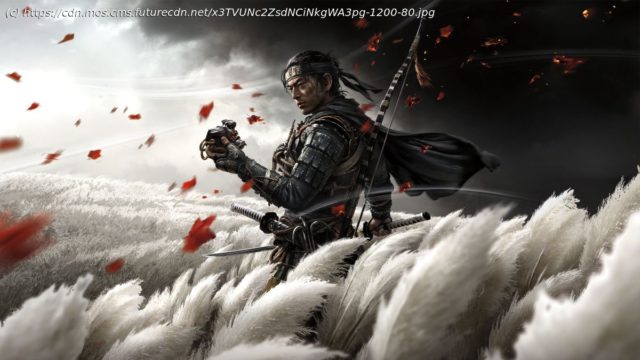Ghost of Tsushima is an engrossing, blood-soaked and beautiful open-world game, and a fitting end for the PS4.
I’ve never played a game before that rewards you for writing a haiku poem, but that’s exactly what Ghost of Tsushima does.
The long-awaited PS4 exclusive not only lets you live out your samurai dreams, slicing and dicing bandits and invaders alike, but also lets you fully inhabit the feudal Japanese setting that acts as its stage.
What the game lacks in originality overall it makes up for with an impeccable commitment to respectfully rendering this historical era, resulting in a stylish smorgasbord of the best ideas seen in open-world gaming this generation, and a fitting swan-song to the PlayStation 4.
Set in the year 1274, Ghost of Tsushima puts you in control of Jin Sakai, the only samurai to survive a brutal attack from an invading Mongol horde, led by Khotun Khan, grandson of Ghengis. The island of Tsushima has been ravaged by the invaders – farms are left burning, bodies lay strewn across the countryside, bandits take advantage of villages’ battered defences, and Lord Shimura (Jin’s uncle and the governor of the island) has been captured. As Jin, it’s up to you to recruit a rag-tag bunch of allies to force the Mongols back, and use both your samurai training and ninja-like stealth to conduct a guerrilla war against the aggressors.
If you’ve played any open-world games in the wake of The Witcher 3, be that Assassin’s Creed: Odyssey or The Legend of Zelda: Breath of the Wild, you’ll know exactly what to expect from Ghost of Tsushima. Starting with just the most basic of weaponry and attacks, Jin will become a more accomplished samurai as he explores the map, earning better weapons and armor, and improved powers by exploring shrines, finding rejuvenating hot springs, and liberating encampments from Mongol troops, as well as navigating the twist-laden main story.
It’s a huge game, with more activities and distractions than can be succinctly listed here. Ghost of Tsushima is filled with tasks at every turn, but does well to hide the box-ticking map icon checklist that other games in the genre fall foul of.
This is in huge part down to its innovative exploration tools. Though you have access to a fog-of-war obscured world map, there’s no minimap or compass when you’re outside of menus. Instead, you have to make use of visual clues around the landscape to find points of interest, and make use of a ‘Guiding Wind’ that can direct you to tracked locations as you clamber up mountainsides and wade through sodden rice fields.
It’s a great feature – mark an objective or spot on the map, and when you’re in the game the direction of the wind instead acts as a visual compass. If trees sway left, your destination lies to the west, for instance, while a column of smoke blowing towards you would indicate you need to make an about turn, whether on foot or on your trusty horse that accompanies you throughout the game.
With long grass abundant, smoke plentiful and leaves kicking up in a bluster, it’s a great way to maintain a minimal HUD and keep you immersed in the action without making you feel lost. And, when no obvious destination presents itself, the wildlife of the island comes into play – golden birds fly towards the vicinity of secret locations, while foxes leave their dens to guide you to the location of buff-rewarding Inari Shrines. And, yes, you can pet the fox.
If exploration is one core pillar of the game, the second would be combat. It’s swift, articulate, blood-thirsty, and challenging, but also empowering. As a weak Jin early in the game, even a lowly rag-wearing bandit can make mincemeat of you, but familiarity with its systems and the enhancements unlocked across the course of your adventure will have you wielding a katana like a master swordsman.
As you’d expect then, swordplay is a major component of combat, and it’s pulled off incredibly satisfyingly here.






